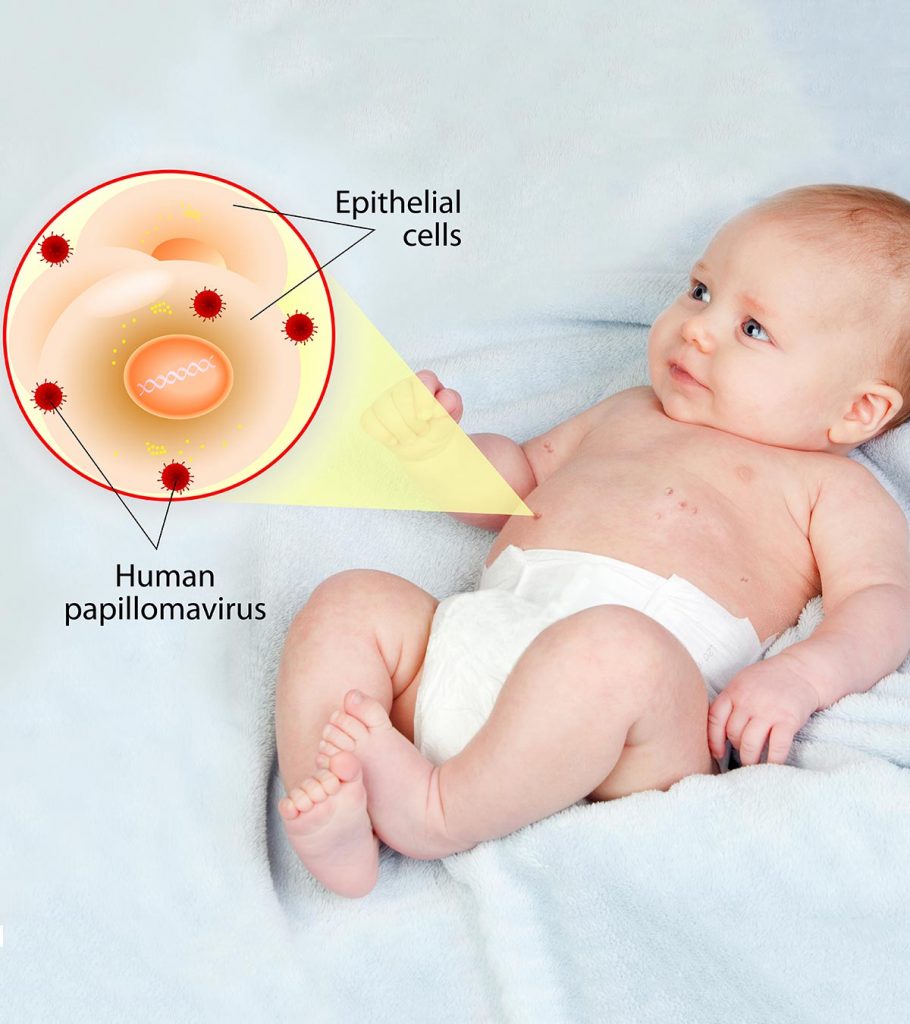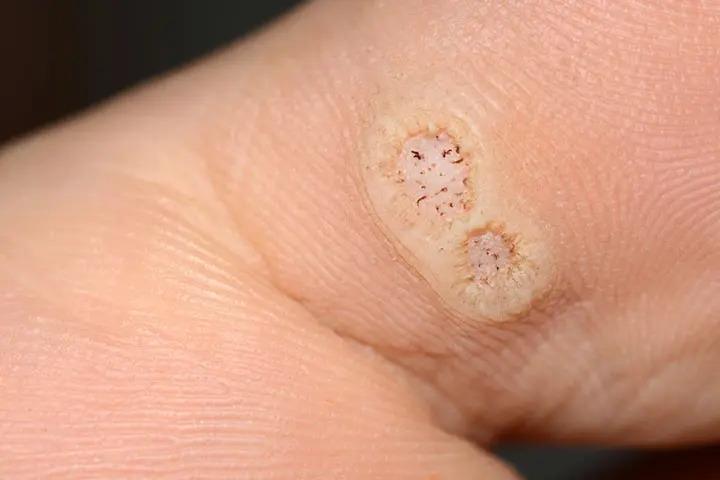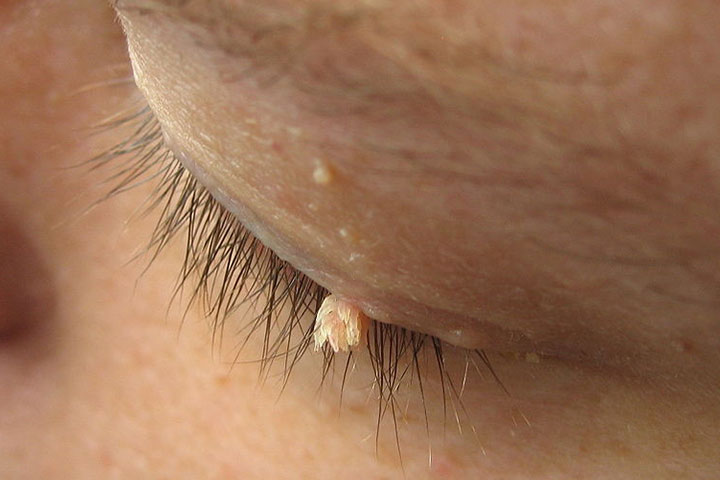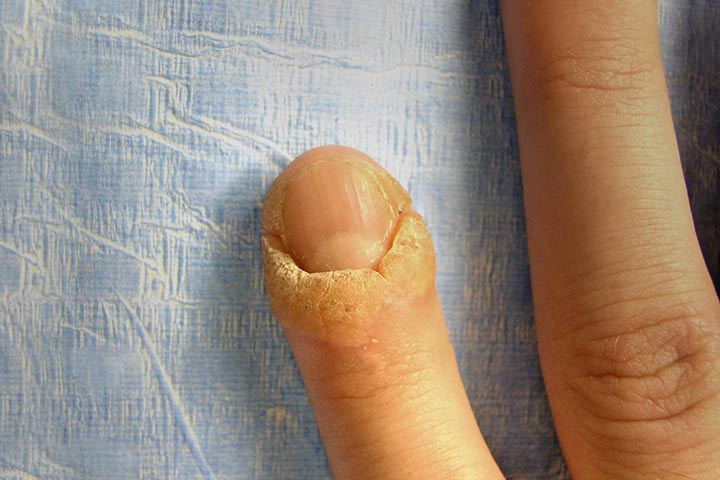Warts or verruca vulgaris are small harmless, noncancerous skin growths that may be seen on the skin surface or the surface of mucous membranes. Warts in babies may look scary, but in most cases, they are harmless. They are not contagious but might spread through direct contact with another infected person or an object.
Read this post to know more about the prevalence, causes, home remedies, diagnosis, treatment, and prevention of warts in babies.
How Common Are Warts In Babies?
Warts are not common in infants. Epidemiologic data on warts in children is limited, and the prevalence of this condition in children and infants is not known. However, the available data suggests the occurrence of these skin lesions is rare in infants and most commonly appears in school-aged children, predominantly in females, with a pick (1). Incidence between the ages of 12 and 16 years (2).
Types Of Warts
There are various types of warts. Each of them looks different.
- Common warts: These are called so since they are the most common type of warts (3). The rough and scaly warts range from the size of a pinhead to that of a pea. They are usually seen on fingers, elbows, the back of the hands, the skin around the nails, and on the feet (4).
- Plantar warts: These are mostly seen on ankles or soles. Unlike other warts that grow outward, plantar warts push inside the skin due to the pressure generated by the body weight when the baby stands. Plantar warts may be painful. Clusters of these warts form a tile-like pattern and are known as a mosaic (5).
- Flat warts: These smooth and smaller warts are mostly seen on the face (4). They are also known as plane warts.
- Filiform warts: They are thread-like and spiky in appearance. These warts mostly appear on the face and look like a brush (4).
- Periungual warts: These warts are mostly seen around fingernails or toenails. They appear as thickened, rough, and cauliflower-like around the affected nail. (6)
- Genital warts: They are small hard nodules seen in genital areas. These are usually rare in babies (4).
Warts might be either single or multiple. They might even have tiny multiple black dots on their surface that come from tiny blood vessels that supply the wart. Knowing the appearance of the wart and its site of occurrence can help parents understand wart in babies.
Causes Of Warts In Babies
Warts are caused by a group of viruses called human papillomavirus (HPV) virus. There are more than 100 strains of HPV that can cause warts. Usually, the virus enters the body through cuts and wounds. However, there are various other modes through which the baby could catch the virus (7).
1. Vertical transmission
- From mother: During pregnancy and childbirth (usually when mother has a genital warth during the vaginal delivery)
- From father: Through an infected sperm
2. Horizontal transmission
- Auto or hetero-inoculation: Infected family members can transmit it through direct contact with the baby. A few activities that might cause transmission are changing diapers, cleaning the baby, and kissing the baby
- Through contaminated objects like toys and towels
- Using common swimming pools
- From other babies at the daycare
Babies with weak immune systems, like those with HIV or on immunosuppressant drugs are at a higher risk of acquiring this viral infection (4).
When To Consult A Doctor?
Mostly, warts do not need medical intervention as they tend to disappear over a period. However, if a wart is accompanied by the following conditions, then take your baby to a pediatric dermatology expert.
- Warts that are growing too quickly
- Warts that are bleeding
- Baby has a fever, loss of appetite, and irritability along with the wart
- The color of the wart changes
- You see any pus-like discharge from the wart
- Any red streaks radiating from the wart, as it indicates infection
If you see any warts in the anogenital region, contact the doctor. They might be contracted during childbirth (8).
Home Remedies For Warts In Babies
Note: A baby’s skin is very tender and delicate. Always watch for any adverse skin reaction or discoloration while using a home remedy. Stop the treatment immediately if any redness or swelling appears. Do a patch test on healthy skin to check for allergies. Be more vigilant with the skin changes in preverbal babies.
Early diagnosis and treatment of viral skin infections in babies can help prevent further spread and complications. The following are a few home remedies for warts.
- Duct tape method: Put a piece of standard duct tape over the wart and leave it for four to seven days. Remove the tape, wash the wart with soap and water, and rub using emery or pumice. Repeat the process by applying a duct tape 12 hours after removing the previous tape. It may take a month to remove the wart using this technique (9).
- Potato: Cut a thin slice of potato, place it over the wart, and cover it with a bandage. Leave it overnight. Repeat the process until the wart disappears, which can take a week (10).
- Banana peel: Apply banana peel directly on to the wart. Cover it with a loose bandage and leave it overnight. Repeat this procedure and wait for a few weeks to see the result (11).
- Papaya: The pulp of papaya has enzymes like papain, which have exhibited antiviral properties. Application of the sap, derived by making a shallow cut in the unripe fruit, twice a day for a few weeks, might lead to falling off of the wart (12).
- Tea tree oil: A study noted that the application of tea tree oil to a wart once a day for 12 days may help provide relief. (13).
- Turmeric paste: Curcumin, the main ingredient of turmeric, is proven to have antimicrobial and antiviral properties. You may consider applying turmeric paste to the wart once a day for a week or more to see if it works (14).
- Warm water soak: Soaking feet and hands affected with warts, in warm water every day for a few days might help in the removal of warts. Be very careful while doing this in babies to avoid accidental burning or scalding of the skin (15).
- Topical vitamin A therapy: Topical application of vitamin A supplements may help provide relief from the wart. A study noted that daily application of vitamin A solution derived from fish liver oil might be an effective remedy for common warts. It may take several months for warts to disappear through this method. Also, fish can be a potential allergen, thus you have to be extra careful (16).
- Fig tree latex: Application of fig tree latex may help provide relief from a wart. The method may take several months. Latex is a potential allergen, so be careful before using this method (17).
- Pineapple: Direct application of pineapple juice or pulp might be helpful in the removal of warts. However, there is no research-based evidence to back this belief.
- Clear nail polish: Coat the wart with clear nail paint directly. Repeat every second day. Wait for two weeks to see the result. Nail polish is said to suffocate the virus by depriving it of oxygen. However, no medical evidence is available to support the theory.
- Milk of dandelion: It may be directly applied to the wart twice a day. Wait for two weeks to see the result. Here too, there is no research-based evidence to prove its efficacy.
- Apple cider vinegar: Direct application of apple cider vinegar on the wart might help in restoring the pH of the skin and thereby helping eliminate the wart. However, there is no research-based evidence.
- Orange peel: Rub orange peel directly onto the wart. The wart might turn orange in color and then darken before falling off. There is no scientific evidence available to back up this belief.
Never use home remedies for genital warts and warts on lips and eyes. For these warts, consult a doctor obviously.
How To Diagnose Warts In Babies?
Your baby’s pediatrician can diagnose a wart by physical examination alone. They may ask about the baby’s overall health and if the little one had any history of infections.
In very few instances, the doctor may scrape a section of the wart for analysis. Rarely, a biopsy is performed on the wart, usually to rule out the chances of other skin problems (18).
What Is The Treatment For Warts In Babies?
Warts are most often harmless for babies with a healthy immune system, and usually, no treatment is required. The body’s immune system can fight and subdue the virus, thus causing the wart to disappear. It may take a year or more for the wart to go away on its own. If your baby is healthy and growing well during this period, then seldom there is any treatment required.
The pediatrician might suggest treatment based on factors like your baby’s overall health, wart size, number of warts, and if the warts are causing any trouble. Based on these factors, any of the following treatment methods (18) may be adopted.
- Applying salicylic acid on the wart to get rid of the extra layers of skin growth.
- Destroying the wart by freezing it with liquid nitrogen, known as cryotherapy. A mother of two beautiful boys and a vlogger shares about the day she took Elliot for cryotherapy for the removal of warts. About the hospital visit, she says, “He (Elliot) is going to have a procedure to remove the bump on his hand and extra oil bubble on his forehead using some nitrogen freezing depending upon the doctor’s recommendation.” Sharing more about the removal, she shares, “After the therapy, the bumps are becoming a little red and swollen. We have a couple more sessions to go (about six to eight times more) as requested by the doctor (1).”
- Destroying the wart through electric current, a process called electrocautery. It is done using a laser diode.
- Destroying the wart by other acids like bichloroacetic or trichloroacetic acid.
- Surgical excision of the wart.
The goals of treatment are the destruction of the wart. Warts might recur or spread even after the treatment. Doctors use the least invasive and most gentle methods when treating warts in babies. While treatment of warts exists, prevention is always better than cure.
How To Prevent Warts In Babies?
Taking precautions to prevent the spread of HPV may help prevent warts in babies. You may take the following measures.
- If a family member has warts, then they must avoid skin to skin contact with the baby.
- Keep the baby’s bath tub, separate from those of other family members.
- Wash your baby’s hands every time they come from the daycare, creche, play areas, parks, etc.
- Apply antiseptic ointment on burns and cuts on the baby’s skin. Keep deep wounds closed to prevent the entry of,.
- Keep the baby’s towels and clothes separate from those of others at home.
- If you plan to go swimming with the baby, then choose pools that are clean and well-maintained
- The baby should wear footwear while going outdoors and not walk barefoot.
Warts in babies may occur due to horizontal or vertical transmission of the HPV virus. Though seldom a cause of concern, it is advised to seek medical care if your baby has warts that have rapid growth, bleeding or pus-like discharge. In most babies, warts resolve without a need for any treatments. However, since they are contagious, you must take specific precautions to prevent viral transmission. In addition, keep your baby healthy by providing them with proper nutrition that aids in strengthening their immunity.
Key Pointers
- Warts are generally small, non-cancerous growths on the skin or mucous membranes.
- Infants do not commonly develop warts, but school-aged children, particularly girls, are more prone to them.
- The primary cause of warts in infants is the human papillomavirus (HPV).
- There are various types of warts, including common warts, plantar warts, flat warts, filiform warts, and genital warts.
- Warts can be spread through close contact, touching infected objects, and vertical transmission during pregnancy.
- If a wart is growing rapidly, bleeding, accompanied by a fever or red streaks, it is important to have the baby evaluated by a doctor.
Kids are more likely to pick up warts at home than in public spaces. Learn how to protect your family from this common skin condition.















